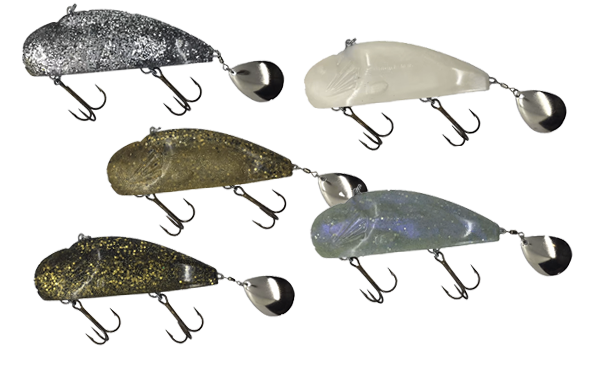Lake Trout

Characteristics

Contrary to their name, Lake Trout are not in fact a true Trout species. Rather, they are a member of the char family. They are a highly coveted game fish with a high-fat content, making them a delicious catch.
Lake trout have white tips on their fins, and their bodies are generally dark, scattered with light-coloured freckles (although these freckles vary significantly depending on their environment).
They have the same moderately elongated bodies as their salmon cousins, with larger specimens sporting a similarly distended belly, that makes them fuller around the center.
They are usually between 2 and 10 pounds in weight, but it's not uncommon for anglers to pull in a Lake Trout to 30-pounds.
Habitat

The bulk of the world’s Lake Trout population exists in Canada, with 25 per cent of the world population located in Ontario. Lake Trout love the cold, dark, deep and oxygen-rich waters of large lakes or rivers.
In Northern areas, some Lake Trout will dwell in shallower lakes, where the water stays cool all year round. Due to their preference for colder climates, anglers have the most success right after the ice melt.
Did you know?
Contrary to their name, Lake Trout are not in fact a true trout species. Rather, they are a member of the char family. They are highly coveted game fish with a high-fat content, making them a delicious catch!
Lake Trout Fishing Techniques
Trolling

Trolling is a fishing technique where you let out a specific amount of fishing line from the reel. This allows the lure to reach a certain depth as it is pulled behind a slowly moving boat. The goal is to cover as much water as possible while the lure imitates the natural movement of prey.
To troll effectively, follow these steps:
- Slowly pull a wobbling crankbait just below the water's surface.
- Wait for a bite before pulling the rod to avoid losing the fish.
- Use a motor that allows your boat to move slowly enough to target the fish you want.
Jigging
Simply, let your jig sink to the bottom or to the middle of the water where the fish are. Then, move the jig up and down at different speeds and motions through the water.
When jigging, it’s important to have a strong rod with a quick tip, especially if you want to catch larger fish. Most anglers suggest using low-stretch lines like braid or fluorocarbon for better sensitivity and easier hook setting.
